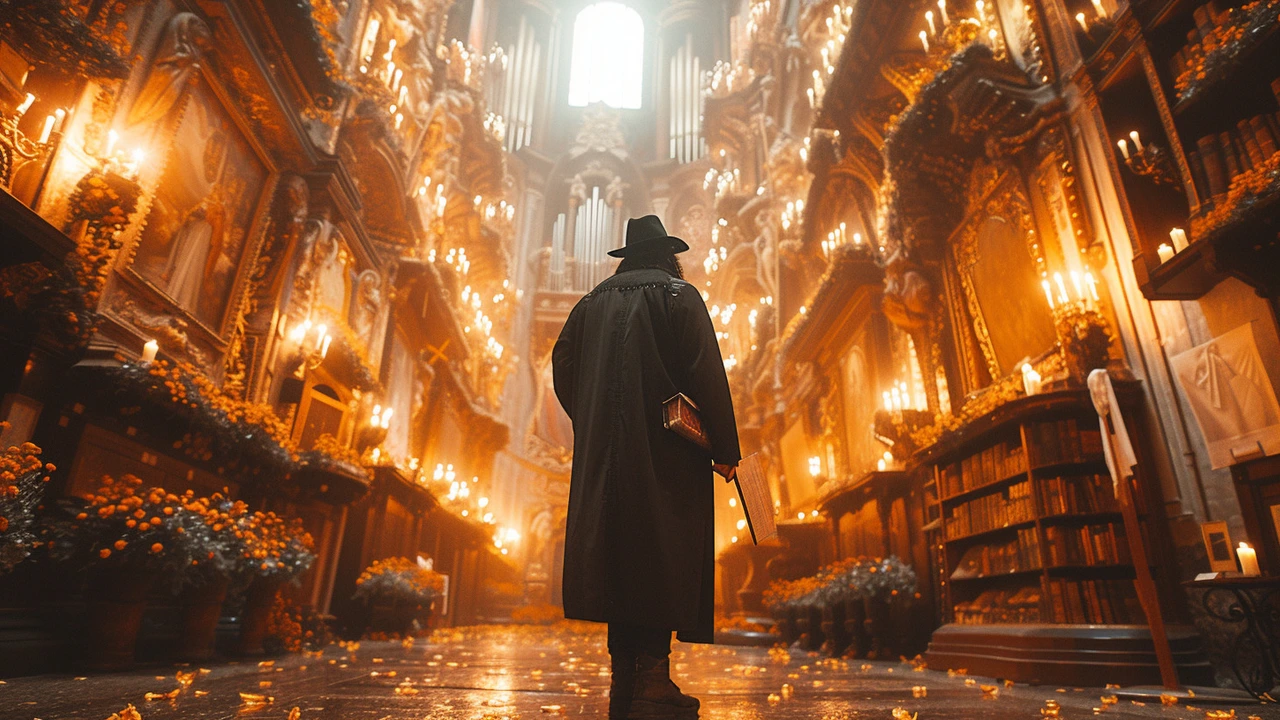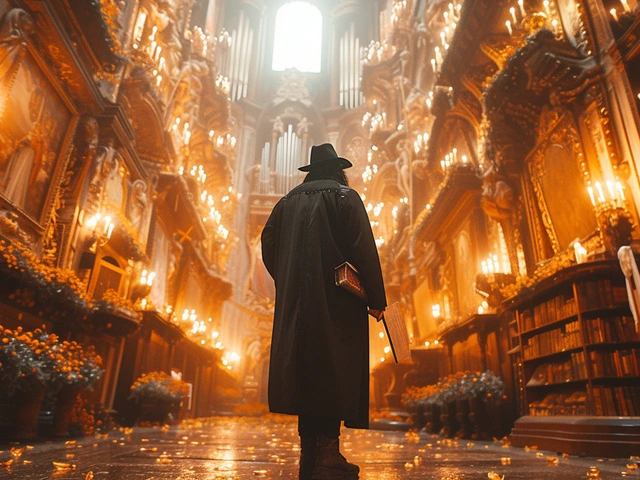A Snapshot of Rococo
Ah, Rococo! A decorative style that is almost as catchy as its name. Rococo emerged in the early 18th century in France and became the high fashion of the 'ancien régime', proving itself as more than just frills and flourishes. It is characterized by whimsical and playful patterns, often romantic motifs, pastel color palettes, asymmetry, and curvilinear forms. Rococo is the artistic expression of the time: light-hearted, filled with movement and a touch of drama. Well, more than just a touch if you would ask some critics.
It is often considered a lighter and more elegant version of the preceding Baroque style, which was itself dramatic and ornate. Just imagine a big, elaborately decorated cake – that’s Baroque. Now, imagine a delicate cupcake with the most intricate icing on top, all pastels and swirls – that’s Rococo darling, pretty as a picture and oh, so refined. There can be no denying the magic of Rococo, its charm cannot be understated. Harper and I just love its intricacy and elegance. We get lost in the whimsical detailing. It's like a visual feast for our senses.
Brushstrokes of Rococo in Art
The Rococo palette is an artist's delight. Soft, pastel and often bursting with gold accents, it exudes a subtle richness and lavish elegance. This gorgeous palette became the hallmark of Rococo artists, who loved depicting the aristocratic life filled with elaborate fêtes and lovely gardens. These works, with their sophisticated, delicate and lighthearted strokes, reflect the luxurious and carefree life of the aristocracy during the epoch.
While Jean-Antoine Watteau and François Boucher are commonly recognised as Rococo's poster boys, there are many more splendid artists who dabbled in and contributed to the Rococo style. Don’t forget Jean-Honoré Fragonard, whose painting ‘The Swing’ is often called the quintessential example of Rococo art, with its light-hearted mood, swirling colors, and delicate motion. The young woman in the swing, her admirer hidden in the foliage, the cupids playing around – oh, the drama of it all! Each time I look at it, it even makes me want to pick up a paintbrush and swirl some colors around.
Rococo in Architecture
The Rococo flight of fancy touches art, design, and architecture alike. Rococo architecture, like its art, emphasizes the elaborate, the ornamental, the whimsical. Many of the most splendid palaces and churches in Europe are designed in the Rococo style, replete with sinuous forms, intricate designs, and in some cases, a strange ethereal beauty that takes your breath away. Rococo architecture is like a serenade in stone and plaster, harmoniously interplaying light and shadow.
For an authentic taste of Rococo architecture, let me take you to the delicate Wieskirche in Germany. With its plasterwork that looks like divine lace and its frescoes that seem to float across the ceiling, it is a piece de resistance. Or, the Amalienburg in Munich - a hunting lodge that’s more jewel box than rustic retreat, with its Hall of Mirrors, an ode to the Rococo love for splendor and symmetry. Harper and I had the chance to visit these places on our European escapade last summer and, quite literally, were left speechless by the grandeur.
Interiors Imitating Rococo Style
Rococo's love affair with exuberance also manifests beautifully in interior design. Spaces adorned in the Rococo style are whimsical, decadent, and often feel like a brush with the fantastical. Pastel hues paired with gold accents, ornate fixtures, upholstered furniture with elegant designs – there's a charm in Rococo interiors that makes you feel like you're living in a fairytale.
When opting for Rococo in your interiors, don’t be daunted by the fear that you may end up living in a museum. Rococo is versatile. One well-chosen piece of Rococo furniture or a fanciful Rococo-style mirror can, in fact, lend an unmatched character to an otherwise modern room. Harper and I have a piece, a beautiful ornate gilded mirror, which is the centerpiece of our living room, and is subject to much admiration from our guests.
Rococo Revisited in Modern Fashion
Rococo's influence isn't confined to the world of interiors and architecture - its influence has gracefully pirouetted into modern fashion as well. The world of fashion, in its constant pursuit of the old and the new, has interpreted Rococo with an avant-garde touch. Inspired by the palette, the playfulness, and the drama of the Rococo, modern designers have spun contemporary creations that belie their 18th-century inspiration.
Rococo fashion is all about playful sophistication. You'll see uncompromising attention to detail, lavish fabrics punctuated with whimsical motifs, and an oozing sense of grandeur. At last season's fashion week, I remember a breath-taking taffeta gown adorned with pastel floral embroidery and cascading ruffles. Ah, it was Rococo breathing in the 21st century! And Harper, the fashion devotee, was nearly swooning over the perfection of it all.
Rococo: Beyond the Frills
Yes, Rococo, with its frills, fancies, and flourishes, is undeniably decadent. But to call it mere decoration or superficiality is to miss the point. Rococo is an expression of the spirit of its time, reflecting a society that valued sophistication, hair-splitting detail, and visual delight. Just as a song is more than a mere melody, Rococo is more than ornamentation – it carries with it a piece of history and a flood of stories.
For those who have the courage to embrace it, Rococo is not just a style but a lifestyle, a philosophy even. It is about appreciating beauty in every form – the play of light, the delicate curve of a shell, the whisper of silk. And Harper and I, in our small ways, continue to celebrate the spirit of Rococo, be it through an art piece, a piece of furniture, or even fashion. Because something as beautiful as Rococo should never be forgotten. So buckle up, my friends, it's a Rococo ride!



Leave a Comments